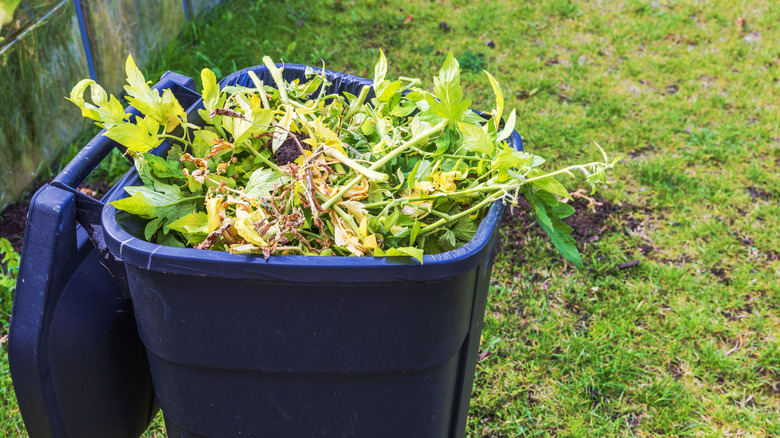The Reason You May Want To Avoid The Popular Chop-And-Drop Gardening Trend
If you've spent any time on garden blogs, Instagram feeds, or even TikTok, you've likely come across the term "chop-and-drop." It's being hailed as a revolutionary shortcut for gardeners, a kind of lazy gardeners dream hack. The idea is rather simple: instead of hauling clippings from your pruned plants, shrubs, or herbs to the compost pile or trash, you cut them and let them fall naturally to the ground. The clippings act as an impromptu mulch, feeding the soil, suppressing weeds, and keeping your beds hydrated by retaining moisture. On the surface, it may seem like a win-win, saving you time and labor while letting nature do the heavy lifting. There's a certain charm to this trick, especially for gardeners who prefer the more natural, untamed aesthetic, and it certainly feels environmentally friendly, as you're recycling plant material back into your garden. But there is a catch to using this method: it may be putting your greenery in danger.
So what does the chop-and-drop method entail? Essentially, it's a pruning technique that involves cutting back the plant and leaving the clippings scattered around the base. They will naturally break down over time, reintroducing nutrients into the soil, while also providing similar benefits to traditional mulching methods. The method itself is rooted in a more naturalistic approach to gardening, as a means of mimicking the typical processes that plants undergo in the wild.
But there are several downsides to the method. Certain plants can harbor disease and pests that can be transferred to the soil or neighboring plants via the clippings. In certain climates, the damp conditions created by excess plant material can promote mold growth or rotting around the base of your plants. Understanding the risks of this method can ensure the safety and health of your precious garden.
Cons of the chop-and-drop method
While the chop-and-drop method may have its champions among gardeners, it isn't without some notable downsides that homeowners need to carefully weigh. One of the biggest concerns is pest and disease management. With typical pruning methods, you can remove disease or pest-riddled plant material before it infects neighboring greenery. However, with this technique, branches and leaves left on the soil surface may carry fungal spores, bacteria, or insect eggs that quickly turn your mulch layer into a potential source of infection. Plants that are stressed, damaged, or already sick can pass these problems on to healthy neighbors, and once a garden is infected, it is difficult to reverse the damage. Even if your plants are healthy, a thick layer of clippings can block sunlight and airflow to the base, potentially suffocating seedlings, a delicate low-growing groundcover, or slower-growing perennials. For gardeners who prefer manicured, tidy beds, the aesthetic can also be a notable downside, creating a potentially unsightly, messy look, especially if you're used to uniform landscapes.
Fortunately, there are alternatives that give many of the same benefits without the risk. Traditional mulching is an obvious choice — collect your pruning clippings, compost them separately, and then apply them as a controlled mulch layer. This reduces the risk of diseases or pests while also improving soil structure and moisture retention. Layered mulching techniques, like mixing shredded bark, leaves, or grass clippings, can replace the nutrient boost that the chop-and-drop provides while keeping your garden looking well-maintained. With these approaches, you can maintain a thriving, healthy garden without running into the pitfalls of following a trendy method. Careful planning and an eye for healthy plants will go much further than simply letting clippings fall where they may.

